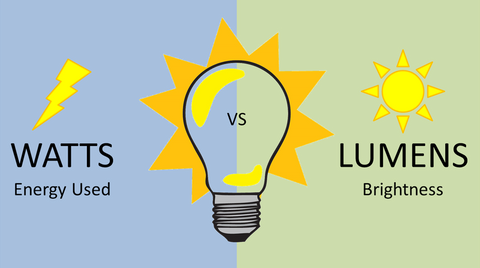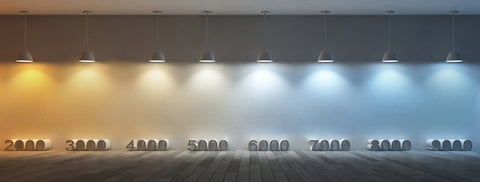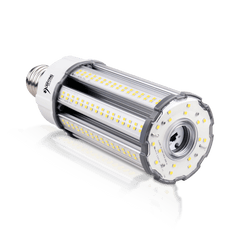Comparing Lumens VS Watts

Today, light bulbs are much more energy efficient then they used to be, consuming 25%-80% less energy! While this is good news to all, it does come with some confusion when comparing lumens to watts.
In the past, people have relied on looking and comparing the wattage of a bulb to determine how bright it is, however, now they need to consider lumens!
When looking at LED bulbs for sale you will see watts and lumens listed on the packaging, but what does it mean when comparing lumens to watts?
While it used to be that the higher the wattage, the brighter the bulb, this is no longer true with the advanced energy efficient bulbs on the market today. New LED bulbs may consume less watts for example, but put out the same, if not more light then their old competitors! With the new energy efficient bulbs taking over today's market, it is keen that the lumens rating is considered.
The lumen rating tells you exactly how much light the bulb produces, hence why higher lumens equals brighter bulbs!
While the lumen rating has been around for some time, LED bulbs were the first to actually display this information in a prominent position on packaging. Manufacturers of LED products are now required by the FTC (Federal Trade Commission) to emphasize the products brightness in lumens rather than wattage as this will help buyers determine which option is the best for them.
When you compare lumens vs watts, they have a direct relationship with one another. In fact, the lumens per watt rating on packages should be highly important to the buyer! The more lumens produced per watts, the more energy efficient they are and the less energy you consume!
When previously shopping for incandescent and compact fluorescent (CFL) bulbs, the wattage was the best way to determine how bright the bulb was, which results in the confusion buyers today have when upgrading to LED. To be sure you are upgrading and obtaining a more efficient bulb, use the below LED wattage comparison charts to compare your old bulbs, to new LED replacements!
|
Incandescent |
LED |
|
40W |
6-9W |
|
60W |
8-12W |
|
75W |
9-13W |
|
100W |
16-20W |
|
150W |
25-28W |
|
Compact Florescent |
LED |
|
8-12W |
6-7W |
|
13-18W |
7-10W |
|
19-22W |
12-13W |
|
23-36W |
14-20W |
|
38-12W |
25-28W |
After you decide which LED bulb you are going to use to replace your outdated bulb, be sure you choose the correct Kelvin measurement! The Kelvin (CCT) does not have much to do with the brightness of the bulb, it more or less just determines what color the light will appear.
The lower the Kelvin, the warmer the bulb will appear, and the higher the kelvin, the cooler the light will appear! For example, warm white (3000K) is typically found in homes and more relaxed spaces and has a yellow hue, whereas cool white (5000K) is typically found in warehouses or working spaces that require a better contrast and no yellow tint.

To help determine which LED Bulb and CCT is best for you, always be sure you speak with a lighting specialist and get a few different recommendations!
Questions or comments about lumens vs watts? We always have ears open to any new input and suggestions, as we enjoy learning from others and sharing knowledge. Contact us today for your complimentary quote on any project, or just to give some input, 813-649-8899 or sales@htm-lighting.com.
- Mary S






